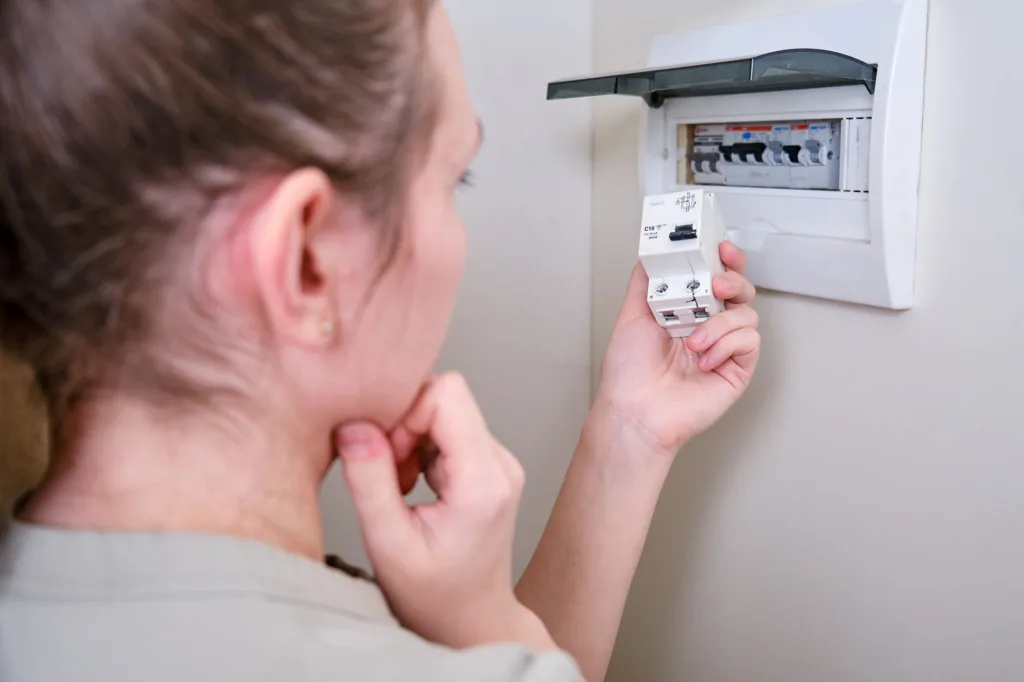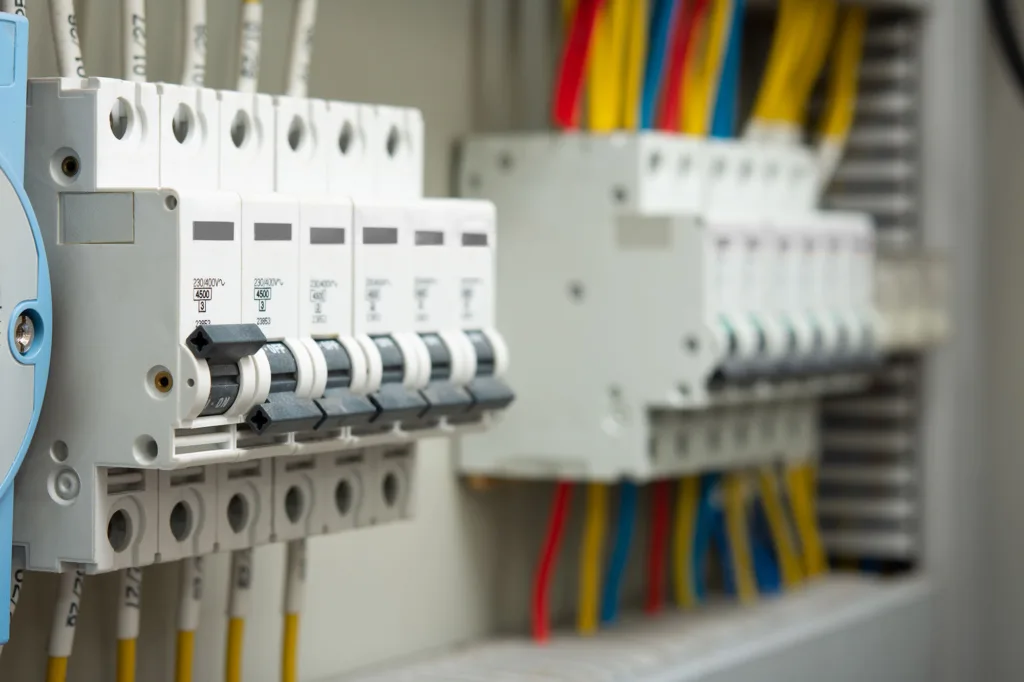Your fuse box might be doing its job—for now. But if it’s been decades since it was installed, it may no longer meet modern safety standards. Older consumer units weren’t designed for today’s electrical demands, and if yours still has rewirable fuses, you’re missing out on crucial protection against electrical faults.
A modern consumer unit isn’t just an upgrade—it’s a necessity. It reduces fire risks, prevents electric shocks, and ensures your home complies with the latest wiring regulations. More importantly, if you’re planning renovations or adding new appliances, your old unit might not be able to handle the extra load. Here’s everything you need to know about upgrading, from spotting the signs that it’s time for a change to understanding the installation process and costs involved.
What is a Consumer Unit?
A consumer unit, commonly known as a fuse box, is the central hub of your home’s electrical distribution. It regulates and protects your electrical circuits, ensuring power is delivered safely throughout your property.
Key Components of a Modern Consumer Unit
- Main Switch – Allows you to cut power to your entire home in an emergency.
- Miniature Circuit Breakers (MCBs) – Automatically trip if there’s an overload or short circuit.
- Residual Current Devices (RCDs) – Detect electrical leaks and prevent electric shocks.
- RCBOs (Optional) – Combine MCB and RCD functions for individual circuit protection.
For a more detailed breakdown of how a consumer unit functions, visit consumer unit functions.
Signs You Need a Consumer Unit Upgrade
A faulty or outdated consumer unit can be a serious safety hazard. Here are some common signs that indicate it’s time for an upgrade:
- Your fuse box is old – If you still have a unit with rewirable fuses, it’s time to modernise.
- Frequent circuit trips – Constantly resetting circuit breakers or replacing fuses suggests an overloaded system.
- No RCD protection – Modern consumer units must include RCDs for safety.
- Burn marks or buzzing noises – Indicate overheating or loose wiring inside the unit.
- Home renovations or added appliances – More electrical demand may require an upgraded unit.
If any of these issues sound familiar, it’s time to consult a professional electrician.
Benefits of Upgrading to a Modern Consumer Unit
1. Enhanced Electrical Safety
Modern consumer units dramatically reduce the risk of electric shocks and fires by cutting power the moment a fault is detected. This is particularly crucial in households with children or older wiring.
2. Compliance with Current Regulations
Upgrading ensures your system meets BS 7671 wiring regulations, which dictate electrical safety standards in the UK. According to the Electrical Safety First, homes with outdated consumer units may fail safety inspections.
3. Increased Energy Efficiency
A new consumer unit helps distribute electricity more effectively, preventing wastage and lowering the risk of damage to appliances.
4. Future-Proofing Your Home
If you plan to add new electrical appliances or extend your home, a modern unit provides the additional capacity needed.
How to Choose the Right Consumer Unit
Not all consumer units are the same. The best choice depends on your home’s size and electrical needs:
- Main Switch Consumer Units – Suitable for small homes with minimal circuits.
- Dual RCD Consumer Units – Provide balanced protection for standard homes.
- RCBO Consumer Units – Offer individual circuit protection, preventing one fault from shutting down the entire system.
To explore your upgrade options, visit consumer unit upgrades.

The Step-by-Step Process of Upgrading a Consumer Unit
Step 1: Inspection & Planning
A qualified electrician will first assess your existing wiring and may recommend an Electrical Installation Condition Report (EICR) to check for faults.
Step 2: Power Shutdown & Safety Measures
Before replacing the unit, the electrician will shut off power to your home and take necessary safety precautions to avoid electrical hazards.
Step 3: Removing the Old Fuse Box
The outdated fuse box is carefully disconnected and removed, ensuring that no live wires pose a risk.
Step 4: Installing the New Consumer Unit
The new unit is mounted and wired, ensuring that each circuit is correctly assigned and protected by an RCD or RCBO.
Step 5: Testing & Certification
Once the installation is complete, the electrician will run safety tests and issue an Electrical Installation Certificate (EIC) to confirm compliance with UK standards.
Cost of Upgrading a Consumer Unit
The cost of replacing a consumer unit depends on several factors, including the size of your home, wiring condition, and labour charges. On average:
- Basic installation: £450–£600
- Larger homes or complex wiring: £600–£800
- Additional repairs or rewiring: £800+
Always get a quote from a qualified electrician to avoid unexpected costs.
UK Regulations and Compliance
Electrical installations in the UK must comply with BS 7671 and Part P of the Building Regulations. According to the UK Government’s Building Regulations, all consumer unit replacements must be carried out by a registered electrician and properly certified.
How to Find a Qualified Electrician
Hiring a certified professional ensures your consumer unit upgrade is safe and compliant. Look for electricians who are:
- Registered with NICEIC or NAPIT – These certifications indicate professional competence.
- Able to provide an EIC – This certificate confirms the work meets safety standards.
- Well-reviewed – Check online reviews and ask for recommendations.
For expert assistance, contact a professional today.
Frequently Asked Questions
Q1: How long does it take to replace a consumer unit?
Most upgrades take between 4 and 8 hours, depending on the condition of the existing wiring and the complexity of the installation.
Q2: Will my electricity be off during the upgrade?
Yes, power will be turned off for the duration of the installation. It’s advisable to plan around this, especially if you work from home.
Q3: Do I need an EICR before replacing my consumer unit?
While not always mandatory, an EICR helps identify any pre-existing wiring issues that might affect the installation process.
Conclusion
Upgrading your consumer unit is a critical step in improving your home’s electrical safety, efficiency, and compliance with modern regulations. If your fuse box is outdated or showing signs of failure, don’t wait until a fault occurs—invest in a modern unit today.
For expert advice and installation, visit Wave Electrical Solutions and ensure your home is powered safely for years to come.










